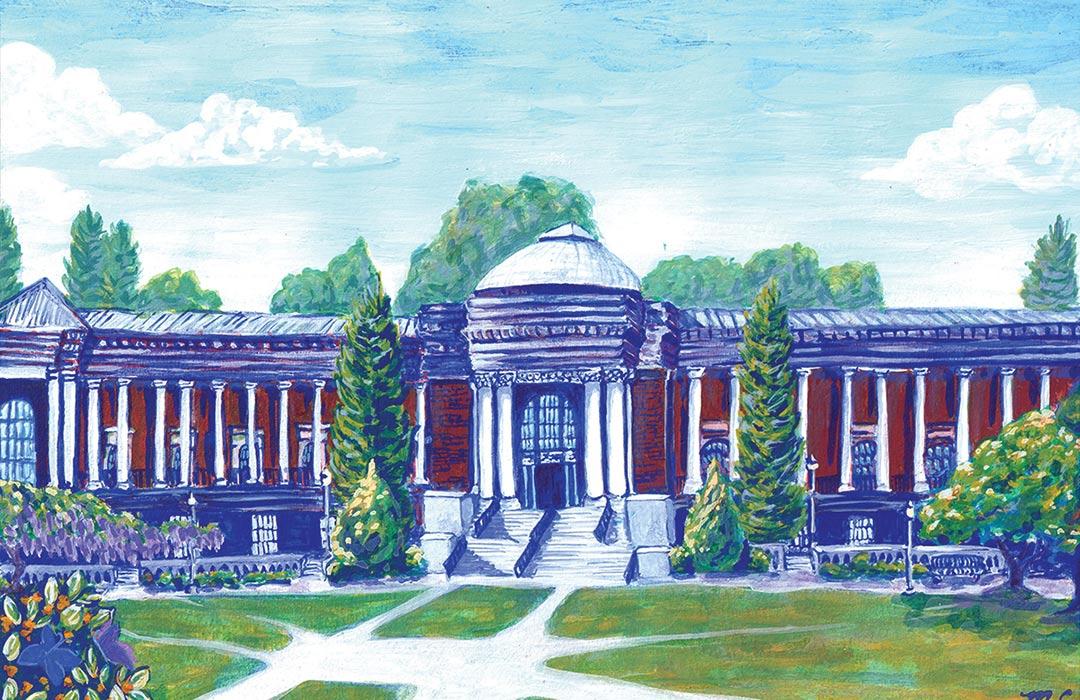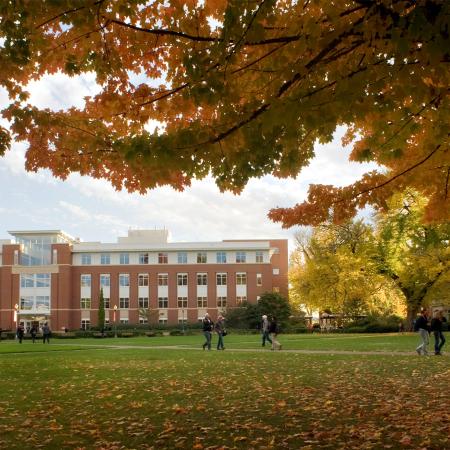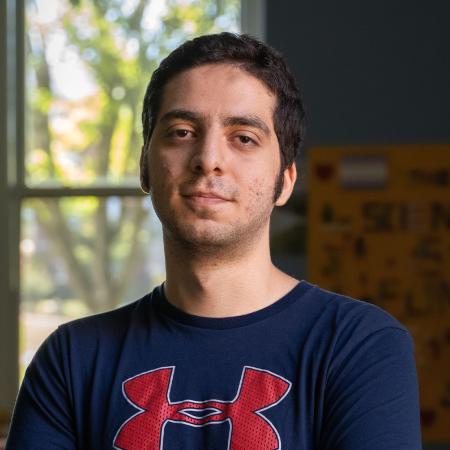"When Maddy approached me and expressed interested in making color pigments and using them in her artwork, I was very excited because Maddy is the first undergraduate non-science major who is interested in doing hands-on chemistry in our group," said Subramanian.
"It is a rare 'Art Meets Science’ moment where an art student wants to create something in our lab and use them in her artistic creations. Maddy is doing an outstanding job and she has made several color pigments in the lab and using in her paintings – for example – her beautiful painting of Memorial Union Façade. She is a very dedicated student and fun to watch her how she mixes her artistic talents in her lab work.”
Maddy created a special painting featuring OSU's Benny the Beaver in the lab using the blue pigments. Alumni attending the OSU State of the University address in Portland February 12 entered the drawing to win the painting.
"Last spring I had the opportunity to meet Mas and hear about his work synthesizing inorganic pigments," said Maddy.
"I was immediately interested, not only in the colors but the process as well. The subject matter of art is not typically art itself; instead it’s the other aspects of life that inform the work that’s made. This convergence of art and science fit perfectly with my multidisciplinary approach to art making and has led to an 8-month internship.
"My time in the lab has already proven to be invaluable. I have enjoyed the opportunity to learn about the research, experience the lab community, and found unique inspiration for an upcoming project this spring."
In Subramanian's lectures on pigment chemistries, he discusses all the ways the pigments are being used and shows slides of paintings done by local artists who have used the pigments in their artwork. He has shared samples of the blue pigments with alumni and friends to use in art, specifically in their paintings.





